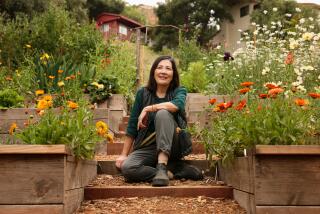A flower shortage is driving up costs for a Mother’s Day of post-COVID-19 reunions
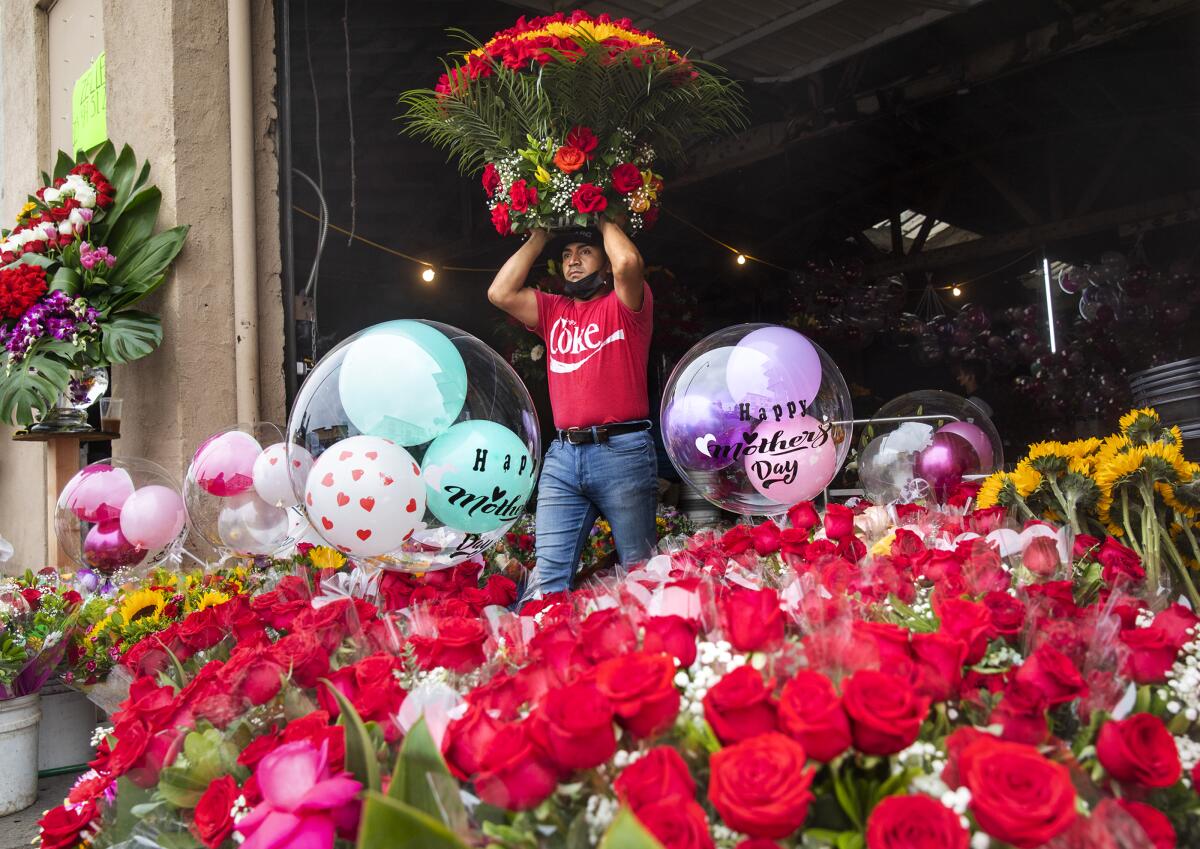
The fragrant scent of roses, lilacs and peonies belied the sweat and stress simmering in L.A.’s Flower District on Friday, where a nationwide flower shortage was driving up demand — and prices — ahead of Mothers’ Day.
By 8 a.m., throngs of shoppers were criss-crossing the alleys of the historic downtown district while vendors scrambled to wrap bouquets and assist long lines of customers.
“Roses in particular are tight,” said Aaron McKinnon, manager of Mayesh, a vendor at the Los Angeles Flower Market. “So are ranunculus and anemones.”
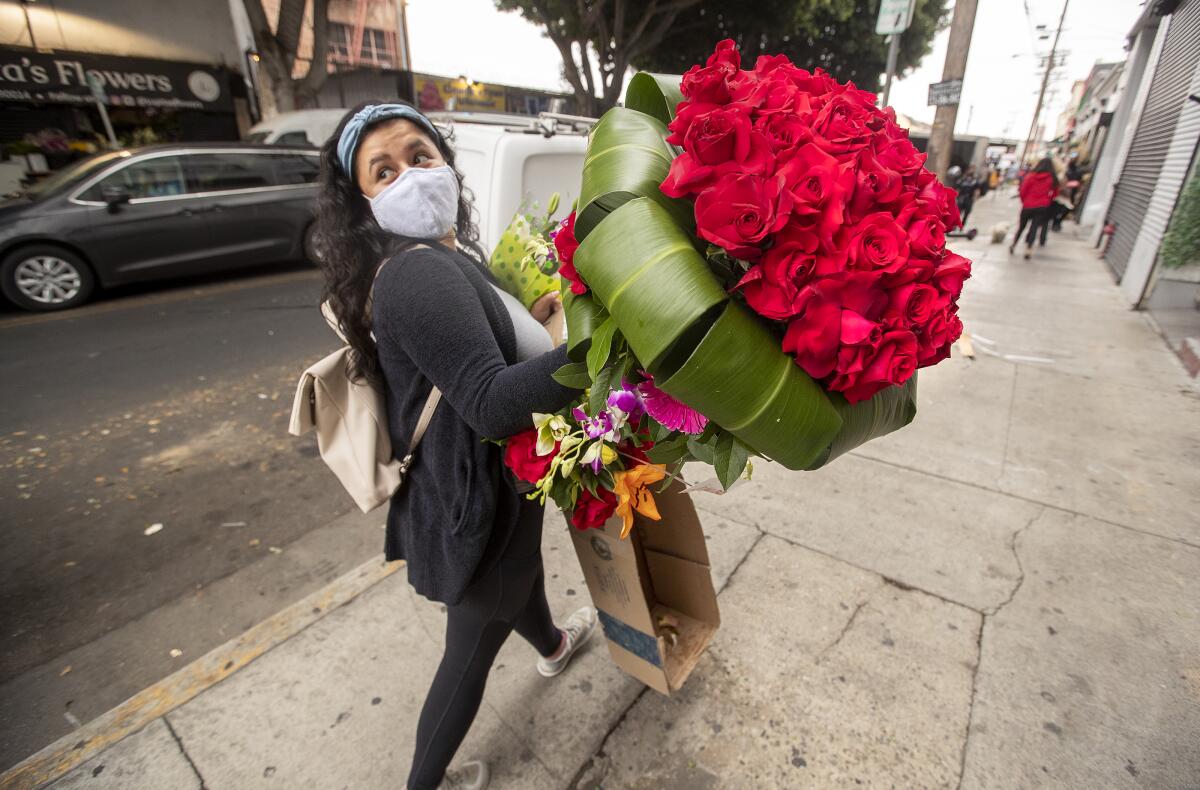
The result is that prices are “sky high,” McKinnon said: A bouquet of 25 roses is running between $30 and $60, depending on the variety, compared with the more typical range of $16 to $30.
There are several factors driving the shortage, many of which can be tied to the pandemic, industry experts said. COVID-19 shutdowns made it hard to predict retail numbers, and unfavorable weather conditions affected many growing regions.
But for some shoppers Friday, the steep cost of the flowers was a small price to pay for the chance to celebrate with loved ones after a long and lonely year.
“I’m having my first family gathering on Sunday,” said Joy Gahring, 66, of the San Gabriel Valley, who purchased a bouquet of sweet peas in preparation for the weekend.
Last year, Gahring and her family went to a park on Mother’s Day, but they “sat far away and couldn’t hug,” she recalled. She was looking forward to hosting three mothers — her sister-in-law, daughter-in-law and daughter-in-law’s mother — at her home Sunday and finally having the opportunity to cook for them again.
“I’m the family matriarch, and I haven’t been able to be the matriarch for a year,” Gahring said, tearing up. “It’s been a hard year, and I just want to honor them.”
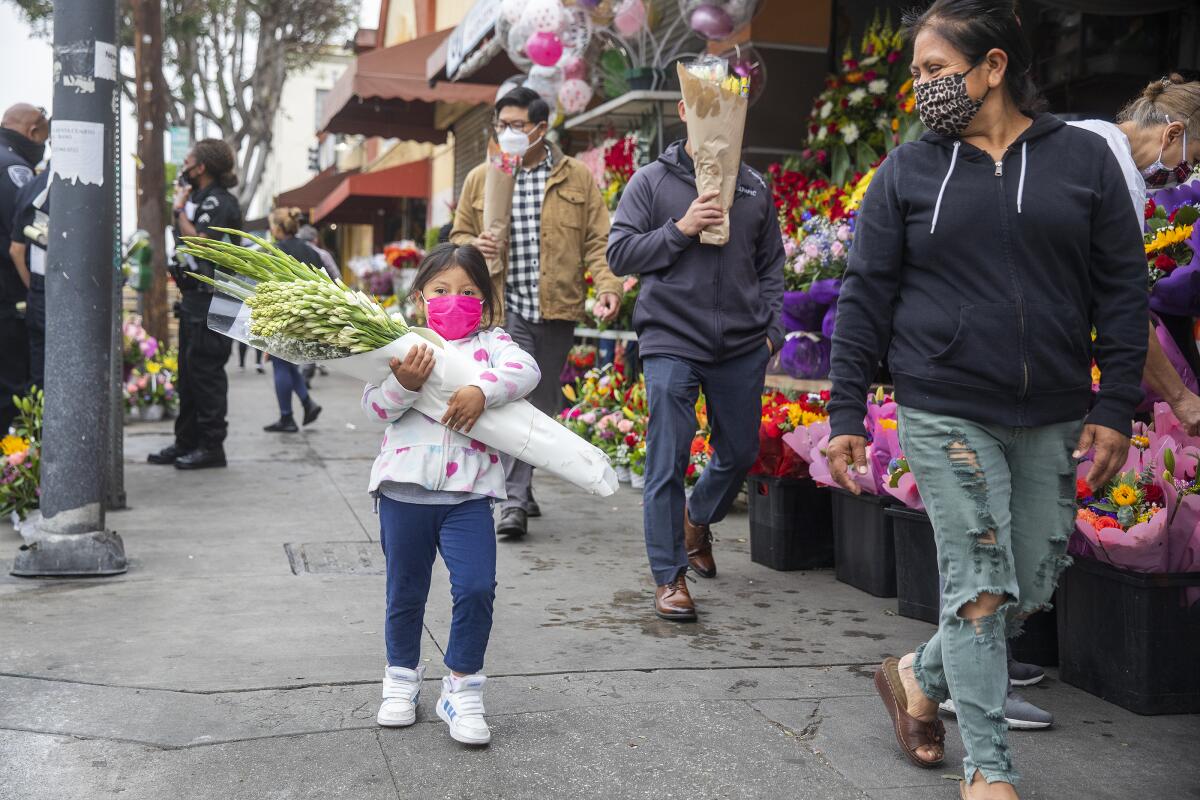
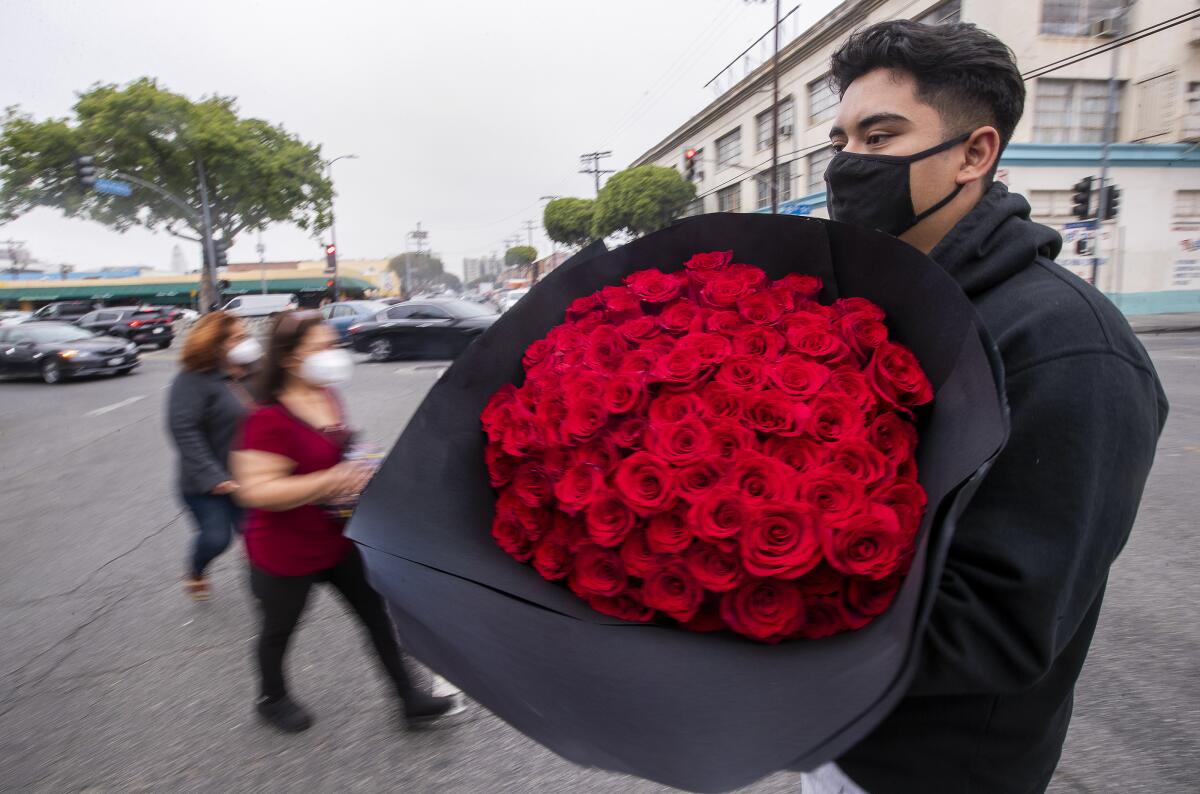
The scene was a stark change from Mother’s Day 2020, when the still-nascent pandemic had driven businesses to a near halt and kept many people separated from their loved ones. Last May, flower vendors in Los Angeles were granted permission to offer retail curbside pickup just days before the holiday.
Amit Shah, president of nationwide retailer 1-800-Flowers, said Friday that many growers did not see their usual demand in 2020 because of retail closures and event cancellations. As a result, the growers planted less in preparation for another similar year.
“Now, with the country reopening and retailers attracting more customers in-store, the demand for florals this spring has exceeded expectations,” Shah said.
Some sellers were reeling from the dramatic swing.
“It’s way better than last year,” said Francisco Rios, who arrived at the Los Angeles Flower Market at 1 a.m. to prepare for Friday’s rush. “Everything is almost back to normal.”
But some of the ramifications of last year’s COVID-19 shutdowns are still being felt in the flower world, according to industry experts.
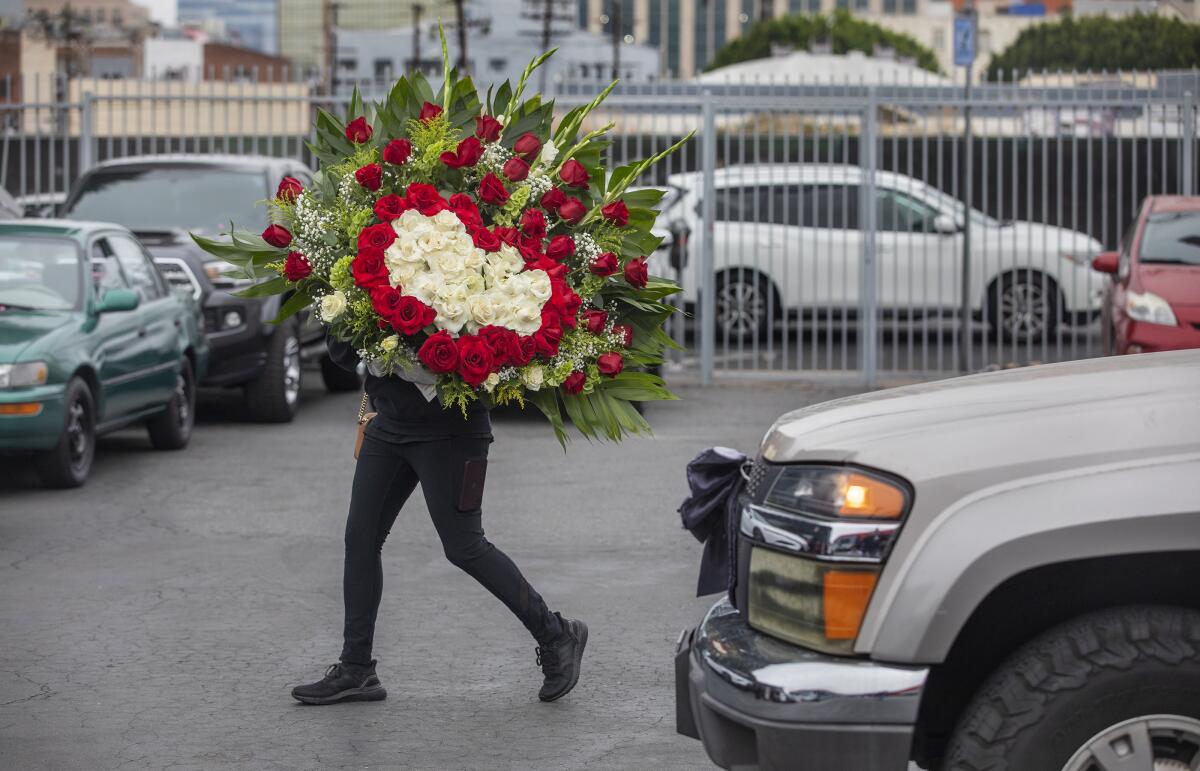
“There was a lot of fear of investing and regrowing the pipeline without knowing what the demand needs were going to be,” said Mark Chatoff, president and chief executive of California Flower Mall, also in the downtown Flower District. Chatoff said he lost about 30% of his vendors during the summer months last year, and some never returned.
There are other factors, too. One flower-seller Friday pointed to unseasonably cold weather in Colombia, Ecuador and other growth regions as a reason for the squeeze, along with workers’ strikes in Colombia. Another noted that many flower farms were abandoned during the pandemic, and that with no one there to spray insecticides, disease ran rampant and ruined the crops.
It was like a “perfect storm for poor production,” Chatoff said, noting that other industries, such as lumber, electronics and logistics, have experienced similar supply chain issues recently.
“Everything is becoming a little bit more complex as a result of the pandemic, or the transition from the pandemic into activating the local economy,” he said. “There are additional costs that are being incurred.”
Dwindling supply levels became such an issue this year that Saeed Babaeean, owner of the Empty Vase Florist in West Hollywood, said he had to stop taking orders Tuesday after several shipments arrived late and others didn’t arrive at all.
Babaeean said it’s a comparatively good problem to have after last year’s challenges, which included having to lay off most of his staff after the initial shutdown. He’s been able to gradually bring the team back in recent months, and he expects this year’s Mother’s Day to go toe-to-toe with his other busiest day of the year, Valentine’s Day.
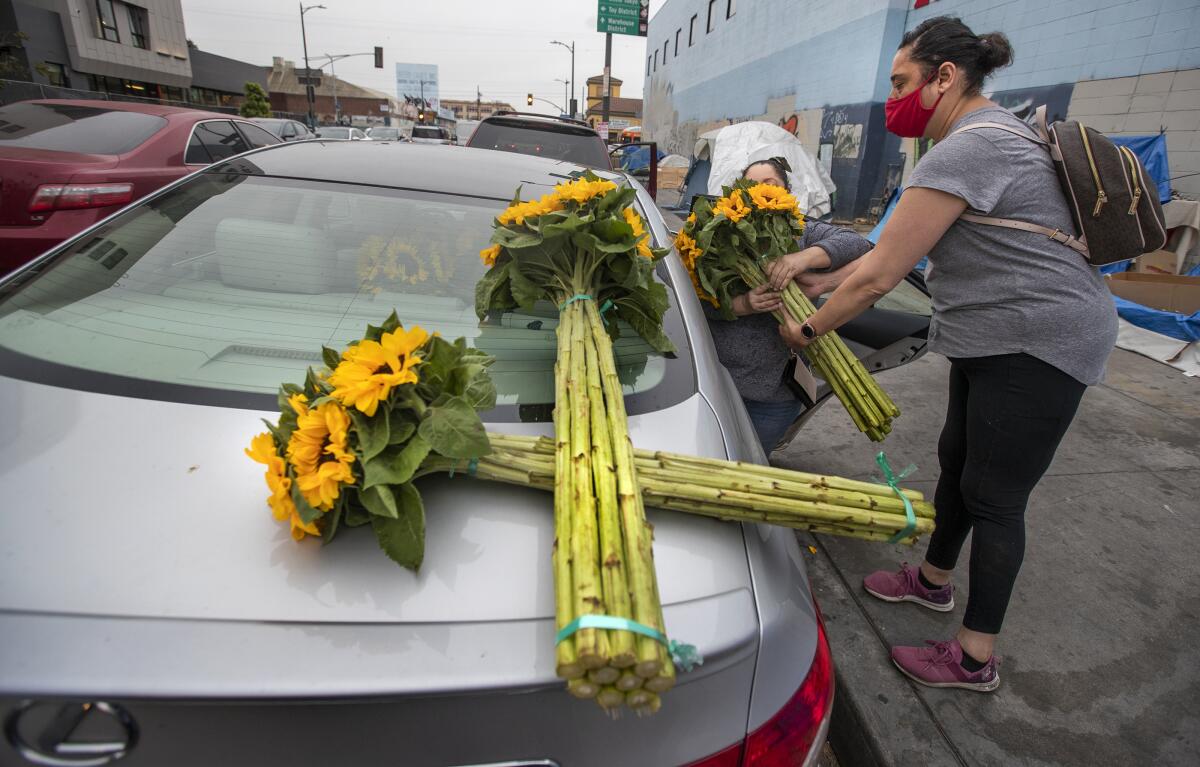
Inside the Flower Market on Friday, one could almost forget the empty halls of 2020.
“It’s fantastic!” FleuraMetz Manager Hans Boer said of the crowds. “Last year was a pain. People weren’t allowed in the building. Now we’re busy.”
Boer said prices for some of his flowers, including roses, climbed 30% to 40% this week. But unlike Valentine’s Day, Mother’s Day affords more options for shoppers: Those looking for deals can try sunflowers, geraniums or tulips, he said.
Robert Rahon, 31, stood with an armful of tulips — along with peonies, eucalyptus branches and a kumquat plant — as he waited for his girlfriend, Jenna Barazsu, 29, to finish scanning the aisles.
“Roses are $30 a color, which is kind of insane,” Rahon said.
Still, he was glad for what the flowers represented. The couple were shopping for Mother’s Day and for a relative’s bridal shower, which is being held nearly a year after the wedding was postponed by COVID-19.
Rahon was also preparing to visit his 95-year-old grandmother at her nursing home in Fresno for the first time since before the pandemic, he said.
That people have so much to celebrate was a welcome change for many vendors. During the pandemic, sadder occasions often filled the places left by canceled birthdays, weddings, quinceañeras and other floral-centric events.
“All those things were offline, and sadly, some of those events had been replaced by funerals,” said Chatoff, of California Flower Mall. “So there was the need for florals — for celebrating a loved one — but in a different way.”
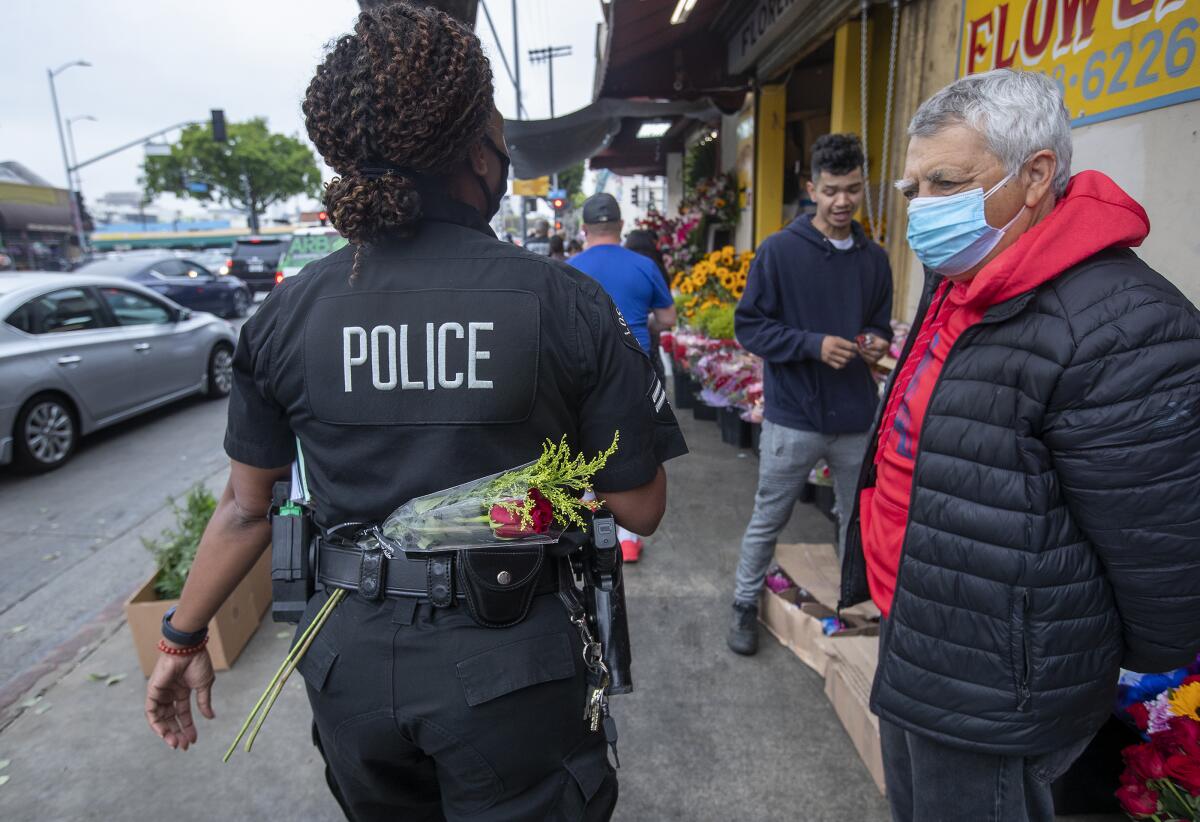
Ruben Rodriguez, a designer at Duran’s Flowers in Pasadena, said supplies have been so tight this week that the shop can’t even put out its usual display of fresh-cut flowers.
“We haven’t had [the display] this week because everything is going into pre-paid orders,” he said. “We’re just hoping we can accommodate the demand.”
And it’s not just roses. Flowers such as hydrangeas that typically cost the shop $40 a box are now running closer to $80, Rodriguez said.
Those costs are often passed down to customers, but the steep prices can be prohibitive for some looking to buy.
Tanayry Vasquez, 34, drove to L.A. from Bakersfield on Friday morning in hopes of finding flowers for her Sunday celebration with her mother-in-law and three daughters. She left the market after being dismayed by the prices and was instead hoping to snag a deal from a curbside vendor selling bouquets from the back of his truck.
“We haven’t really gotten together,” she said of her family as she waited to purchase four rose bouquets at $18 apiece. “My daughters haven’t really seen [their grandmother] this year, which has been hard because they’re really close.”
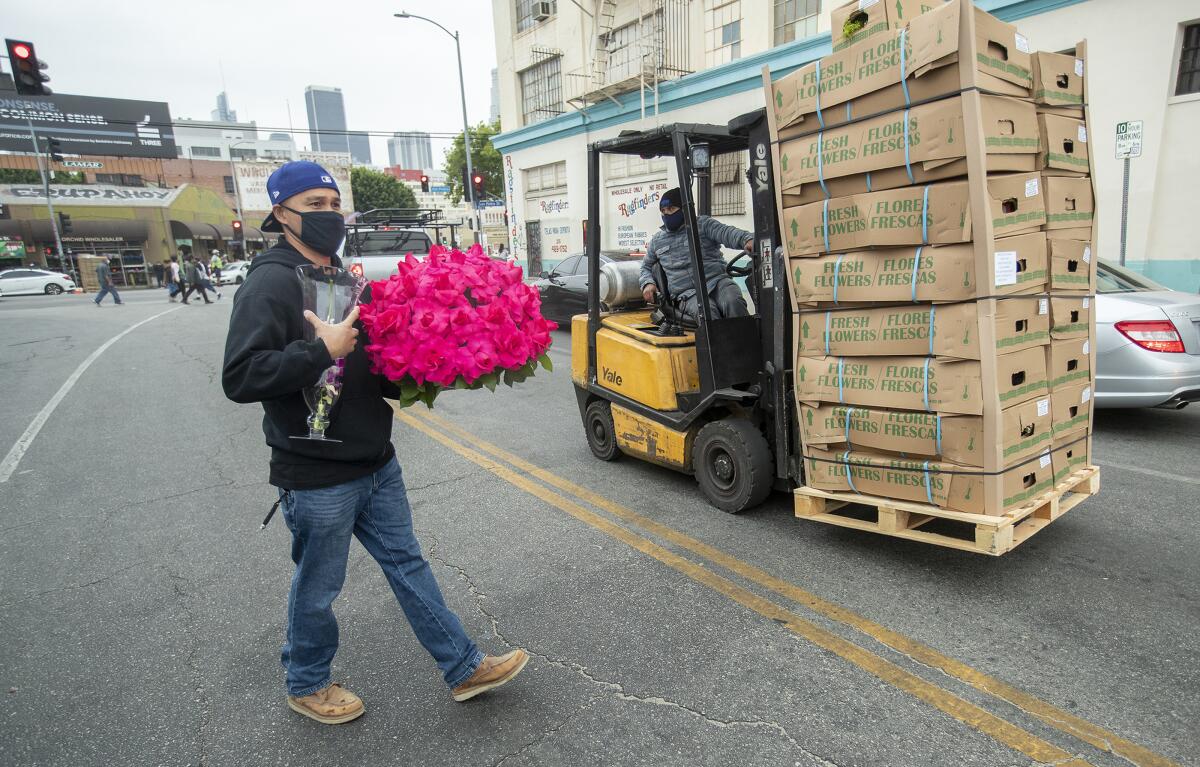
Although demand isn’t showing immediate signs of slowing, there are indications that the supply shortage is improving, said Elizabeth Daly, a spokeswoman for the Society of American Florists.
The cold weather that disrupted so many flower farms is warming, which will help late spring and summer supplies and make for an even better fall, Daly said.
But with the National Retail Federation predicting that Mother’s Day spending will climb to a record $28.1 billion this year — with 68% of shoppers planning to purchase flowers — the weekend could continue to be a crunch.
Some shoppers Friday said it’s worth it.
“Friends and loved ones need something to be excited about,” said Rachel Laforce, 35, who was buying supplies for her small flower business and is pregnant with her first child.
“I just think people are glad for something genuinely positive after this isolated year,” she said, her arms full of bouquets.
More to Read
Sign up for Essential California
The most important California stories and recommendations in your inbox every morning.
You may occasionally receive promotional content from the Los Angeles Times.


